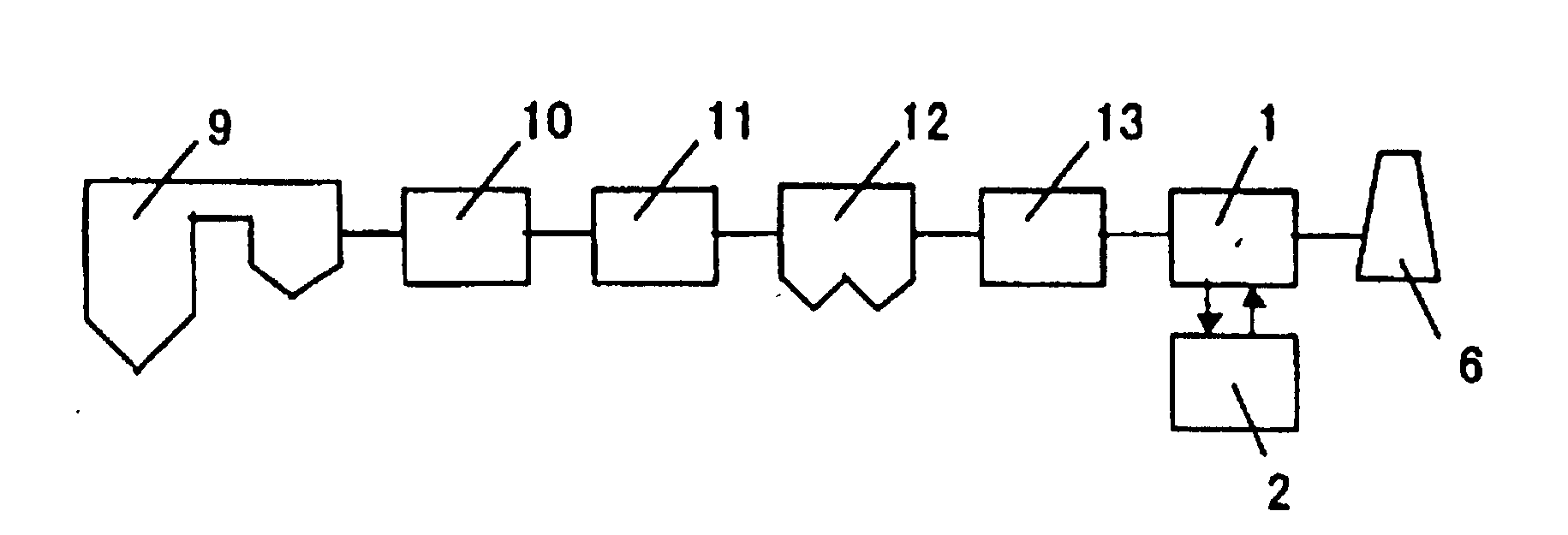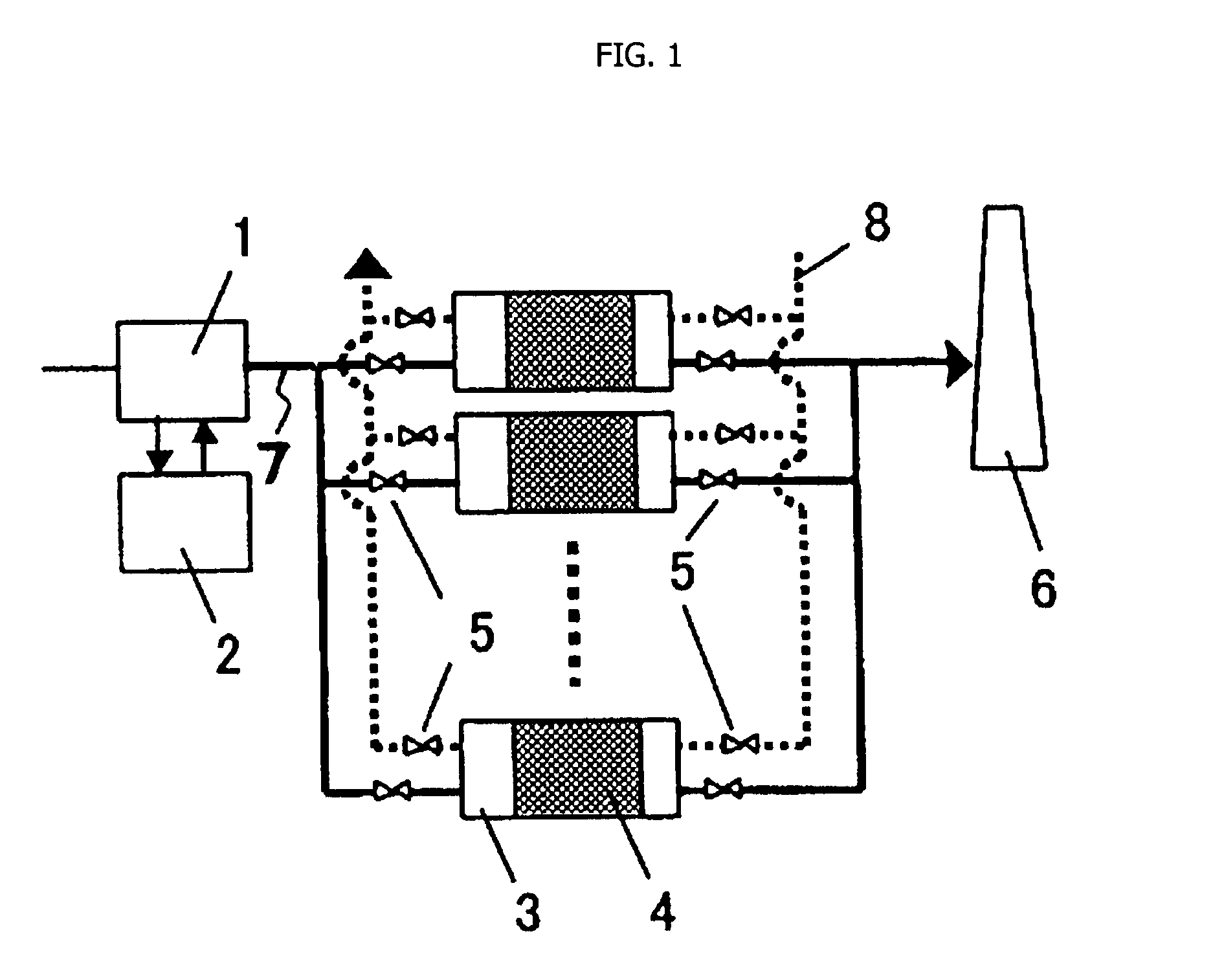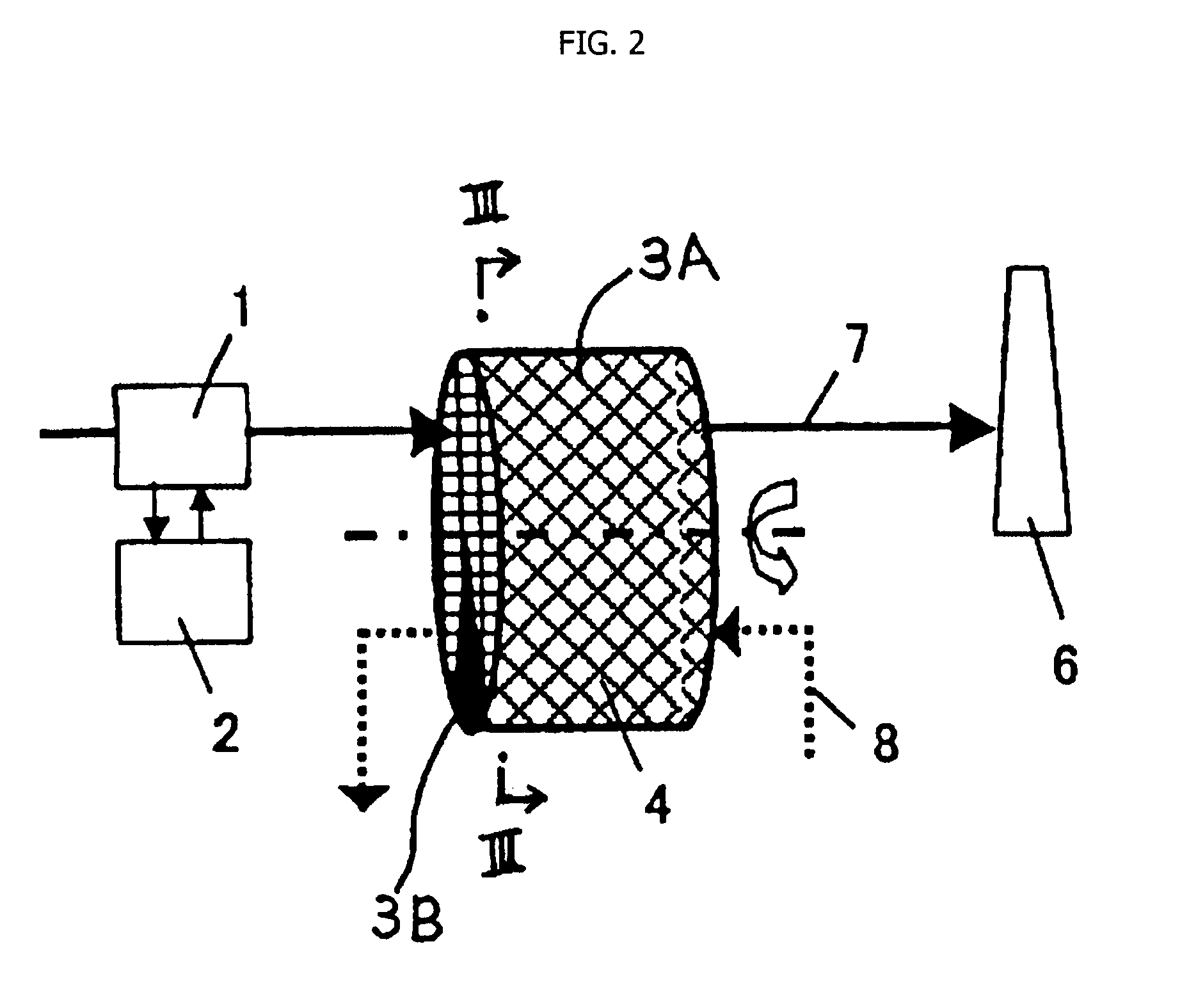Method and device for treating gas discharged from carbon dioxide recovery device
a carbon dioxide and recovery device technology, applied in the direction of physical/chemical process catalysts, metal/metal-oxide/metal-hydroxide catalysts, separation processes, etc., can solve the problem of increasing co2 /sub>emissions, not wanting to directly release amines into the atmosphere, and not being economically or practically desirable. , to achieve the effect of efficient adsorption and removal and removal of amines
- Summary
- Abstract
- Description
- Claims
- Application Information
AI Technical Summary
Benefits of technology
Problems solved by technology
Method used
Image
Examples
example 1
[0028]Water was added to 1.5 kg of a titanium oxide powder having specific surface area of 300 m2 / g and SO4 content of 3% by weight, 188 g of ammonium molybdate (NH46.Mo7O24.4H2O), 175 g of ammonium metavanadate (NH4VO3) and 226 g of oxalicacid (H2C2O4.2H2O), and the mixture was kneaded into a paste having a moisture content of 34% by weight. Then, 300 g of inorganic fibers made of silica-alumina was kneaded together with the paste to be uniformly dispersed in the paste. The paste thus obtained was placed on a 0.2 mm thick metal lath base material made of SUS430, and passing it through between a pair of upper and lower roller presses, a catalyst paste was applied so as to fill the interior of through holes of the metal lath to obtain a 0.8 mm thick sheet. The obtained sheet was air-dried and fired at 500° C. for 2 hours to prepare a decomposition catalyst 1 for amines.
example 2
[0029]The same operation was carried out, except that ammonium molybdate in Example 1 was changed to 268 g of ammonium metatungstate (NH46W12O40.xH2O, 92% in terms of WO3), to prepare a decomposition catalyst 2 for amines.
example 3
[0030]The same operation was carried out, except that ammonium molybdate in Example 1 was not added, to prepare a decomposition catalyst 3 for amines.
PUM
| Property | Measurement | Unit |
|---|---|---|
| temperature | aaaaa | aaaaa |
| specific surface area | aaaaa | aaaaa |
| thick | aaaaa | aaaaa |
Abstract
Description
Claims
Application Information
 Login to View More
Login to View More - R&D
- Intellectual Property
- Life Sciences
- Materials
- Tech Scout
- Unparalleled Data Quality
- Higher Quality Content
- 60% Fewer Hallucinations
Browse by: Latest US Patents, China's latest patents, Technical Efficacy Thesaurus, Application Domain, Technology Topic, Popular Technical Reports.
© 2025 PatSnap. All rights reserved.Legal|Privacy policy|Modern Slavery Act Transparency Statement|Sitemap|About US| Contact US: help@patsnap.com



